Table Of Content
Biography
![Dr.Sarvepalli_Radhakrishnan_photo.jpg Dr.Sarvepalli_Radhakrishnan_photo]() Radhakrishnan was born with the name Sarvepalli Radhakrishnayya to Telugu-speaking parents named Sarvepalli Veeraswami and Sithamma. He was born in Tiruttani, North Arcot district, in the then-Madras Presidency (present-day Tiruvallur district, Tamil Nadu), the second of three children. His ancestors settled in the village of Sarvepalli in the Andhra Pradesh province of Nellore. He spent his formative years between the cities of Thiruttani and Tirupati. His paternal grandfather worked for a local Zamindar (landlord) as a revenue official. His early education took place at Thiruttani's K. V. High School. In 1896, he enrolled at both the Government High Secondary School in Walajapet and the Hermansburg Evangelical Lutheran Mission School in Tirupati.
Radhakrishnan was born with the name Sarvepalli Radhakrishnayya to Telugu-speaking parents named Sarvepalli Veeraswami and Sithamma. He was born in Tiruttani, North Arcot district, in the then-Madras Presidency (present-day Tiruvallur district, Tamil Nadu), the second of three children. His ancestors settled in the village of Sarvepalli in the Andhra Pradesh province of Nellore. He spent his formative years between the cities of Thiruttani and Tirupati. His paternal grandfather worked for a local Zamindar (landlord) as a revenue official. His early education took place at Thiruttani's K. V. High School. In 1896, he enrolled at both the Government High Secondary School in Walajapet and the Hermansburg Evangelical Lutheran Mission School in Tirupati.
Sarvepalli Radhakrishnan was a politician, philosopher, and statesman from India. From 1962 to 1967, he was the country's second president. Before that, from 1952 to 1962, he was the first vice president of India. From 1949 to 1952, he was the second Indian ambassador to the Soviet Union. From 1939 to 1948, he was the fourth vice-chancellor of Banaras Hindu University, and from 1931 to 1936, he was the second vice-chancellor of Andhra University. Radhakrishnan is known as one of the most influential and well-known comparative religion and philosophy scholars of the 20th century. From 1921 to 1932, he was the King George V Chair of Mental and Moral Science at the University of Calcutta, and from 1936 to 1952, he was the Spalding Chair of Eastern Religion and Ethics at the University of Oxford.
Education
![indias-gem.jpg sarvepalli-radhakrishnan-education]() In 1896, Radhakrishnan was sent to school in Tirupati, a nearby pilgrimage centre with a distinctively cosmopolitan flavour that draws bhaktas from all over India. Hermannsburg Evangelical Lutheran Missionary School was Radhakrishnan's alma mater for four years. The young Radhakrishnan's first exposure to non-Hindu missionaries and 19th century Christian theology with its emphasis on direct experience of God was in this setting. Radhakrishnan would have undoubtedly witnessed the highly devotional activities connected to the nearby Tirumala temple, activities that may have found resonance with the theology taught in the missionary school. Radhakrishnan may have drawn parallels between the missionaries' faith and the local Tirumala temple's faith due to their shared emphasis on the importance of a person's own religious experience.
In 1896, Radhakrishnan was sent to school in Tirupati, a nearby pilgrimage centre with a distinctively cosmopolitan flavour that draws bhaktas from all over India. Hermannsburg Evangelical Lutheran Missionary School was Radhakrishnan's alma mater for four years. The young Radhakrishnan's first exposure to non-Hindu missionaries and 19th century Christian theology with its emphasis on direct experience of God was in this setting. Radhakrishnan would have undoubtedly witnessed the highly devotional activities connected to the nearby Tirumala temple, activities that may have found resonance with the theology taught in the missionary school. Radhakrishnan may have drawn parallels between the missionaries' faith and the local Tirumala temple's faith due to their shared emphasis on the importance of a person's own religious experience.
Throughout his academic career, Radhakrishnan received numerous scholarships. To complete his secondary schooling, he enrolled at Voorhees College, located in Vellore. At the age of 16, he enrolled in Madras Christian College (associated with the University of Madras) after completing his F.A. (First of Arts) program. In addition to receiving his undergraduate degree there in 1907, he also earned his master's degree there. Radhakrishnan fell into the study of philosophy rather than actively pursuing it. Radhakrishnan was a financially strapped student, so when a cousin who had graduated from the same college gave him his philosophy textbooks, he knew exactly what he would study.
The Ethics of the Vedanta and its Metaphysical Presuppositions was the topic of Sarvepalli's undergraduate thesis. It was meant to be a rebuttal of the claim that there was no place in the Vedanta system for ethics. Reverend William Meston and Dr. Alfred George Hogg, two of Radhakrishnan's professors, both gave high marks to his thesis. Twenty-year-old Radhakrishnan had his thesis published. Critiques from Hogg and other Christian educators of Indian culture, as stated by Radhakrishnan himself, disturbed my faith and shook the traditional props on which I leaned. The student Radhakrishnan explains it all in his own words.
This prompted him to devote his life to protecting Hinduism from uninformed Western criticism through critical study of Indian philosophy and religion. The professor was lauded by Radhakrishnan, who called him one of the greatest Christian thinkers we had in India, and My distinguished teacher. In addition, the acting principal of the college, Professor William Skinner, vouched for him, saying, he is one of the best men we have had in the recent years, which ultimately landed him the first job at Presidency College. One of Radhakrishnan's earliest books was dedicated to William Skinner as a gesture of gratitude.
Family
![Dr.-Sarvepalli-Radhakrishnan-family.jpg Dr.-Sarvepalli-Radhakrishnan-family]() Radhakrishnan was the name given to Sarvepalli Radhakrishnayya when he was born into the Telugu-speaking household of his parents, Sarvepalli Veeraswami and Sithamma. He was the middle child of three. In May of 1903, at the age of 16, Radhakrishnan got married to Sivakamu (1893-1956), a distant cousin who was only 10 years old. According to custom, the marriage was arranged between the two families. Padmavati, Rukmini, Sushila, Sundari, and Shakuntala were the names given to the couple's five daughters.
Radhakrishnan was the name given to Sarvepalli Radhakrishnayya when he was born into the Telugu-speaking household of his parents, Sarvepalli Veeraswami and Sithamma. He was the middle child of three. In May of 1903, at the age of 16, Radhakrishnan got married to Sivakamu (1893-1956), a distant cousin who was only 10 years old. According to custom, the marriage was arranged between the two families. Padmavati, Rukmini, Sushila, Sundari, and Shakuntala were the names given to the couple's five daughters.
They also raised a son, Sarvepalli Gopal, who became a prominent historian. Radhakrishnan's descendants, including his grandchildren and great-grandchildren, have gone on to excel in a wide variety of fields, from research and teaching to medicine and law to banking and publishing. His great-grandnephew is the famous Indian cricketer V. V. S. Laxman. In 1956, Sivakamu passed away on the 26th. They shared an approximate 53-year marriage.
Career as an Academic
Radhakrishnan joined the Madras Presidency College faculty in April 1909, where he taught philosophy. After that, in 1918, the University of Mysore appointed him to the position of Professor of Philosophy at Maharaja's College, Mysore. The Quest, the Journal of Philosophy, and the International Journal of Ethics were just a few of the publications in which his work had appeared by that point. His first book, titled The Philosophy of Rabindranath Tagore, is also complete. He considered Tagore's philosophising to be a genuine manifestation of the Indian spirit. In 1920, he released his second book, titled The Reign of Religion in Modern Philosophy.
In 1921, he accepted a position as professor of philosophy at the University of Calcutta, where he would hold the King George V Chair of Mental and Moral Science. In June 1926, he attended the Congress of the Universities of the British Empire, and in September 1926, he attended the International Congress of Philosophy at Harvard. The invitation to deliver the Hibbert Lecture on the ideals of life at Manchester College, Oxford in 1929, which was later published as An Idealist View of Life, was another major academic event during this time.
Radhakrishnan was invited to become principal of Manchester College in 1929 after J. Estlin Carpenter left the position. As a result, he was able to address the students of Oxford University on the topic of comparative religion. George V knighted him in the June 1931 Birthday Honours for his contributions to education, and the Governor-General of India, the Earl of Willingdon, formally invested him with the honour in April 1932. After Indian independence, however, he stopped using the title in favour of his academic one, Doctor. From 1931 to 1936, he served as Andhra University's vice chancellor.
Career as a Politician
![radhakrishnan-with-john-f-kennedy.jpg radhakrishnan-with-john-f-kennedy]() While Radhakrishnan had a prosperous academic career, he began his political career late in his life. His reputation as an international leader came before he entered politics. The idea to rename the Ceded Districts division of Madras Presidency as Rayalaseema was proposed at the 1928 Andhra Mahasabha, which he attended. It was after his nomination to the League of Nations Committee for Intellectual Cooperation in 1931 that in Western eyes he was the recognised Hindu authority on Indian ideas and a persuasive interpreter of the role of Eastern institutions in modern society.
While Radhakrishnan had a prosperous academic career, he began his political career late in his life. His reputation as an international leader came before he entered politics. The idea to rename the Ceded Districts division of Madras Presidency as Rayalaseema was proposed at the 1928 Andhra Mahasabha, which he attended. It was after his nomination to the League of Nations Committee for Intellectual Cooperation in 1931 that in Western eyes he was the recognised Hindu authority on Indian ideas and a persuasive interpreter of the role of Eastern institutions in modern society.
Radhakrishnan served as India's ambassador to the Soviet Union from 1949 to 1952 after he served as India's representative to UNESCO from 1946 to 1952. India gained its independence in 1947. In addition, he was chosen to serve in India's Constituent Assembly. Radhakrishnan was first elected as India's Vice President in 1952 and later served as the country's second President from 1962 to 1967. Neither the Congress Party nor the Indian independence movement had any ties to Radhakrishnan's past. The politician in the background was him.
His drive came from a need to defend Hinduism from what he called uninformed Western criticism as well as a desire to show off his pride in Hindu tradition. He had always defended Hindu culture against uninformed Western criticism, and he represented Indians' pride in their own intellectual traditions, as noted by historian Donald Mackenzie Brown.
Philosophy of Radhakrishnan
![indian-philosophy-book.jpg indian-philosophy-book]() Radhakrishnan's philosophy tried to connect Eastern and Western ways of thinking. He defended Hinduism against criticism from the West, but he also used philosophical and religious ideas from the West. He based his philosophy on Advaita Vedanta, which is a school of Hindu philosophy, but he gave a modern take on its ideas. He thought that the world of experience was real and full of different things and that it was supported by the absolute, or Brahman. He also changed the way people thought about the idea of Maya. Instead of being a strict, absolute idealism, he saw it as a person's wrong view of the world.
Radhakrishnan's philosophy tried to connect Eastern and Western ways of thinking. He defended Hinduism against criticism from the West, but he also used philosophical and religious ideas from the West. He based his philosophy on Advaita Vedanta, which is a school of Hindu philosophy, but he gave a modern take on its ideas. He thought that the world of experience was real and full of different things and that it was supported by the absolute, or Brahman. He also changed the way people thought about the idea of Maya. Instead of being a strict, absolute idealism, he saw it as a person's wrong view of the world.
Radhakrishnan's philosophy was based in large part on intuition, which he saw as a way to get knowledge that does not go through conscious thought. He thought that intuition or religious experience was a thing that could vouch for itself, prove itself, and shine its own light. Radhakrishnan put different kinds of experiences into groups, such as cognitive, sensory, intuitive, psychic, aesthetic, moral, and religious. He thought that intuition was important in all kinds of situations.
Radhakrishnan put different religions into groups based on how they thought religious experience would be. He thought that theology and creeds were ways of putting together ideas and were also signs of religious intuition. He put Advaita Vedanta at the top, followed by people who believed in a personal God, reincarnations, ancestors, gods, sages, and small forces and spirits. Radhakrishnan thought that Hinduism was a scientific religion based on facts that could be found through intuition and religious experience. He stressed how important it is for a scientific philosophy of religion to be based on facts and experiences. Even though he was aware of other religions, he thought that Advaita Vedanta was the highest form of religion because it was the most direct and intuitive. He also made all religions more like Hinduism by seeing them as different forms of Advaita Vedanta.
Influence of Radhakrishnan
![radhakrishnan-statue.jpg radhakrishnan-statue]() Radhakrishnan was a scholar of religion and philosophy who was very important in the 20th century. His defence of Hindu traditions helped India become a nation-state and helped Vedanta become the most important part of Hinduism. Radhakrishnan's explanations of Hinduism and focus on spiritual experiences made it easier for people in the west to understand, which influenced modern spirituality. People have said that he is a bridge between East and West because he has strong roots in both Indian and Western philosophy.
Radhakrishnan was a scholar of religion and philosophy who was very important in the 20th century. His defence of Hindu traditions helped India become a nation-state and helped Vedanta become the most important part of Hinduism. Radhakrishnan's explanations of Hinduism and focus on spiritual experiences made it easier for people in the west to understand, which influenced modern spirituality. People have said that he is a bridge between East and West because he has strong roots in both Indian and Western philosophy.
Radhakrishnan's ideas, on the other hand, have also been criticised. His claims that there is an underlying divine unity and that philosophical and religious traditions from different cultures have a lot in common have been called into question. The essentialism of perennialism has been criticised, and other approaches have focused on how cultural factors affect religious experiences. Radhakrishnan's view of Vedanta as the core of Hinduism and Hindu nationalists' use of it have been criticised for promoting exclusivism and communalism. Also, the effects of colonialism and colonialist ways of knowing have been seen in Radhakrishnan's works. This shows how Indian culture and traditions need to be shown in a more nuanced way.
Awards and Achievements
State Honours
|
Decoration
|
Country
|
Date
|
Note
|
|
Order of Merit
|
United Kingdom
|
1963
|
Honorary Member
|
|
Pour le Mérite
|
Germany
|
1954
|
For Sciences and Arts
|
|
Order of the Aztec Eagle
|
Mexico
|
1954
|
Sash First Class, the highest civilian honour of Mexico.
|
|
Bharat Ratna
|
India
|
1954
|
The highest civilian honour of India.
|
|
Knight Bachelor
|
British India
|
1931
|
Ceased to use the pre-nominal of Sir in 1947,
following the independence of India.
|
Achievements
|
Year
|
Achievements
|
|
1989
|
Institution of the Radhakrishnan Scholarships by Oxford University in the memory of Radhakrishnan.
The scholarships were later renamed the Radhakrishnan Chevening Scholarships.
|
|
1975
|
The Templeton Prize in 1975, a few months before his death, for advocating non-aggression and conveying
a universal reality of God that embraced love and wisdom for all people.
He donated the entire amount of the Templeton Prize to Oxford University.
|
|
1968
|
Sahitya Akademi fellowship, The highest honour conferred by the Sahitya Akademi on a writer
|
|
1962
|
Institution of Teacher's Day in India, yearly celebrated at 5 September, Radhakrishnan's birthday,
in honour of Radhakrishnan's belief that teachers should be the best minds in the country.
|
|
1961
|
The Peace Prize of the German Book Trade.
|
|
1959
|
Goethe Plaque of the City of Frankfurt.
|
|
1947
|
Election as Permanent Member of the Instutut international de philosophie.
|
|
1938
|
Elected Fellow of the British Academy.
|
|
1933 to 1937
|
Nominated five times for the Nobel Prize in Literature.
|
|
N/A
|
He was nominated sixteen times for the Nobel Prize in literature, and eleven times for the Nobel Peace Prize.
|
|
N/A
|
A portrait of Radhakrishnan adorns the Chamber of the Rajya Sabha.
|
Commemorative Stamps of Radhakrishnan released by India Post
|
![]()
|
![]()
|
|
1967
|
1989
|
10 Quotes by Radhakrishnan
-
![Portrait_DR-radhakrishnan.jpg Portrait_DR-radhakrishnan]() It is not God that is worshipped but the authority that claims to speak in His name. Sin becomes disobedience to authority not violation of integrity.
It is not God that is worshipped but the authority that claims to speak in His name. Sin becomes disobedience to authority not violation of integrity.
-
There is nothing wonderful in my saying that Jainism was in existence long before the Vedas were composed.
-
A life of joy and happiness is possible only on the basis of knowledge.
-
If he does not fight, it is not because he rejects all fighting as futile, but because he has finished his fights. He has overcome all dissensions between himself and the world and is now at rest... We shall have wars and soldiers so long as the brute in us is untamed.
-
Reading a book gives us the habit of solitary reflection and true enjoyment.
-
When we think we know, we cease to learn.
-
A literary genius, it is said, resembles all, though no one resembles him
-
The true teachers are those who help us think for ourselves.
-
Religion is behavior and not mere belief.
-
True religion is a revolutionary force: it is an inveterate enemy of oppression, privilege, and injustice.
Interesting Facts About Sarvepalli Radhakrishnan
-
Radhakrishnan was chosen to be the head of UNESCO's executive board in 1948.
-
He didn't have enough money to pay for his schooling. Radhakrishnan went to school for his whole life with the help of scholarships.
-
People think that Dr. Sarvepalli Radhakrishnan was one of India's most important philosophers.
-
The Radhakrishnan Chevening Scholarships and the Radhakrishnan Memorial Award were both made by Oxford University.
-
He went to school in Tirupati and then went to Vellore to learn more.
-
He went to the Christian College in Madras, which is now called Chennai, to study philosophy.
-
His job at Madras Presidency College was to teach philosophy. At the University of Mysore, he also taught philosophy.
-
In 1952, he was named India's vice president.
-
He became India's second president in 1962 and stayed in that position until 1967.
-
He was also up for the Nobel Prize in Literature 16 times and the Nobel Peace Prize almost 11 times.
Celebrate Teachers' Day with Tring: Customised Celebrity Selfie Video Wishes for Your Inspiring Teachers!
Teachers' Day is celebrated every year on September 5 to remember the birthday of Dr. Sarvepalli Radhakrishnan, an Indian scholar and former President. Dr. Radhakrishnan was not only a respected scholar but also a philosopher and statesman who made important contributions to the field of education. The idea for Teachers' Day in India came from his belief in the power of teaching and the role of teachers in shaping a country.
Tring gives you a unique and personal way to thank and admire teachers who have changed your lives in a way that will last. With Tring, you can send personalised celebrity selfie video wishes to your favourite teachers. Think about how happy and surprised your teachers will be when they get a message from one of their favourite celebrities.
Tring brings fans together with their favourite Bollywood actor, sports star, or TV personality to create moments that will be remembered forever. Show them how much you appreciate their hard work and help by giving them a message from one of their favourite celebrities.
![button_book-teachers-day-wish-now.png]()
![birthday occasion]() Birthday Gifts
Birthday Gifts
![anniversary occasion]() Anniversary Gifts
Anniversary Gifts
![women]() Women
Women
![men]() Men
Men
![Couples]() Couples
Couples
![Couples]() Wedding Gifts
Wedding Gifts

 Birthday Gifts
Birthday Gifts
 Women
Women
 Men
Men
 Anniversary Gifts
Anniversary Gifts
 Wedding Gifts
Wedding Gifts
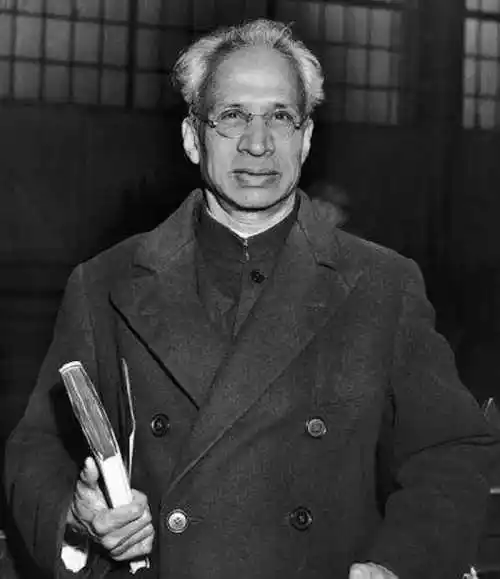 Radhakrishnan was born with the name Sarvepalli Radhakrishnayya to Telugu-speaking parents named Sarvepalli Veeraswami and Sithamma. He was born in Tiruttani, North Arcot district, in the then-Madras Presidency (present-day Tiruvallur district, Tamil Nadu), the second of three children. His ancestors settled in the village of Sarvepalli in the Andhra Pradesh province of Nellore. He spent his formative years between the cities of Thiruttani and Tirupati. His paternal grandfather worked for a local Zamindar (landlord) as a revenue official. His early education took place at Thiruttani's K. V. High School. In 1896, he enrolled at both the Government High Secondary School in Walajapet and the Hermansburg Evangelical Lutheran Mission School in Tirupati.
Radhakrishnan was born with the name Sarvepalli Radhakrishnayya to Telugu-speaking parents named Sarvepalli Veeraswami and Sithamma. He was born in Tiruttani, North Arcot district, in the then-Madras Presidency (present-day Tiruvallur district, Tamil Nadu), the second of three children. His ancestors settled in the village of Sarvepalli in the Andhra Pradesh province of Nellore. He spent his formative years between the cities of Thiruttani and Tirupati. His paternal grandfather worked for a local Zamindar (landlord) as a revenue official. His early education took place at Thiruttani's K. V. High School. In 1896, he enrolled at both the Government High Secondary School in Walajapet and the Hermansburg Evangelical Lutheran Mission School in Tirupati.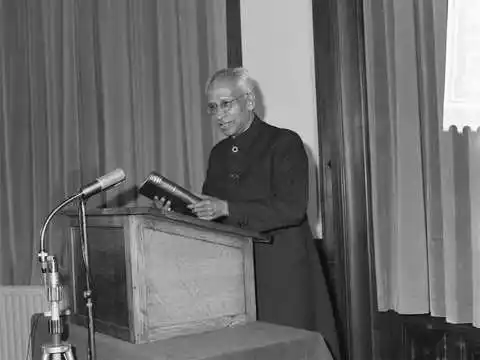 In 1896, Radhakrishnan was sent to school in Tirupati, a nearby pilgrimage centre with a distinctively cosmopolitan flavour that draws bhaktas from all over India. Hermannsburg Evangelical Lutheran Missionary School was Radhakrishnan's alma mater for four years. The young Radhakrishnan's first exposure to non-Hindu missionaries and 19th century Christian theology with its emphasis on direct experience of God was in this setting. Radhakrishnan would have undoubtedly witnessed the highly devotional activities connected to the nearby Tirumala temple, activities that may have found resonance with the theology taught in the missionary school. Radhakrishnan may have drawn parallels between the missionaries' faith and the local Tirumala temple's faith due to their shared emphasis on the importance of a person's own religious experience.
In 1896, Radhakrishnan was sent to school in Tirupati, a nearby pilgrimage centre with a distinctively cosmopolitan flavour that draws bhaktas from all over India. Hermannsburg Evangelical Lutheran Missionary School was Radhakrishnan's alma mater for four years. The young Radhakrishnan's first exposure to non-Hindu missionaries and 19th century Christian theology with its emphasis on direct experience of God was in this setting. Radhakrishnan would have undoubtedly witnessed the highly devotional activities connected to the nearby Tirumala temple, activities that may have found resonance with the theology taught in the missionary school. Radhakrishnan may have drawn parallels between the missionaries' faith and the local Tirumala temple's faith due to their shared emphasis on the importance of a person's own religious experience.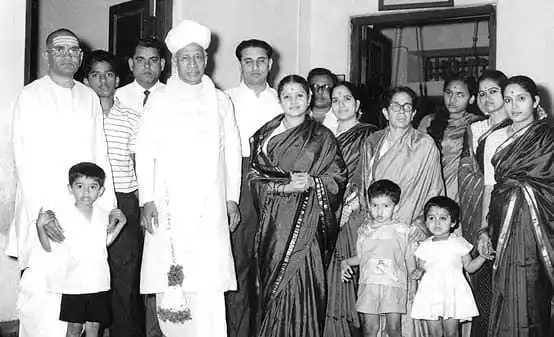 Radhakrishnan was the name given to Sarvepalli Radhakrishnayya when he was born into the Telugu-speaking household of his parents, Sarvepalli Veeraswami and Sithamma. He was the middle child of three. In May of 1903, at the age of 16, Radhakrishnan got married to Sivakamu (1893-1956), a distant cousin who was only 10 years old. According to custom, the marriage was arranged between the two families. Padmavati, Rukmini, Sushila, Sundari, and Shakuntala were the names given to the couple's five daughters.
Radhakrishnan was the name given to Sarvepalli Radhakrishnayya when he was born into the Telugu-speaking household of his parents, Sarvepalli Veeraswami and Sithamma. He was the middle child of three. In May of 1903, at the age of 16, Radhakrishnan got married to Sivakamu (1893-1956), a distant cousin who was only 10 years old. According to custom, the marriage was arranged between the two families. Padmavati, Rukmini, Sushila, Sundari, and Shakuntala were the names given to the couple's five daughters. 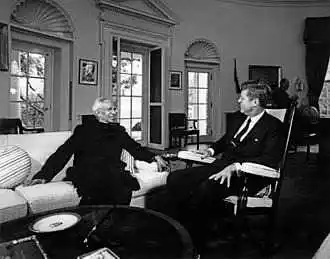 While Radhakrishnan had a prosperous academic career, he began his political career late in his life. His reputation as an international leader came before he entered politics. The idea to rename the Ceded Districts division of Madras Presidency as Rayalaseema was proposed at the 1928 Andhra Mahasabha, which he attended. It was after his nomination to the League of Nations Committee for Intellectual Cooperation in 1931 that in Western eyes he was the recognised Hindu authority on Indian ideas and a persuasive interpreter of the role of Eastern institutions in modern society.
While Radhakrishnan had a prosperous academic career, he began his political career late in his life. His reputation as an international leader came before he entered politics. The idea to rename the Ceded Districts division of Madras Presidency as Rayalaseema was proposed at the 1928 Andhra Mahasabha, which he attended. It was after his nomination to the League of Nations Committee for Intellectual Cooperation in 1931 that in Western eyes he was the recognised Hindu authority on Indian ideas and a persuasive interpreter of the role of Eastern institutions in modern society. Radhakrishnan's philosophy tried to connect Eastern and Western ways of thinking. He defended Hinduism against criticism from the West, but he also used philosophical and religious ideas from the West. He based his philosophy on Advaita Vedanta, which is a school of Hindu philosophy, but he gave a modern take on its ideas. He thought that the world of experience was real and full of different things and that it was supported by the absolute, or Brahman. He also changed the way people thought about the idea of Maya. Instead of being a strict, absolute idealism, he saw it as a person's wrong view of the world.
Radhakrishnan's philosophy tried to connect Eastern and Western ways of thinking. He defended Hinduism against criticism from the West, but he also used philosophical and religious ideas from the West. He based his philosophy on Advaita Vedanta, which is a school of Hindu philosophy, but he gave a modern take on its ideas. He thought that the world of experience was real and full of different things and that it was supported by the absolute, or Brahman. He also changed the way people thought about the idea of Maya. Instead of being a strict, absolute idealism, he saw it as a person's wrong view of the world.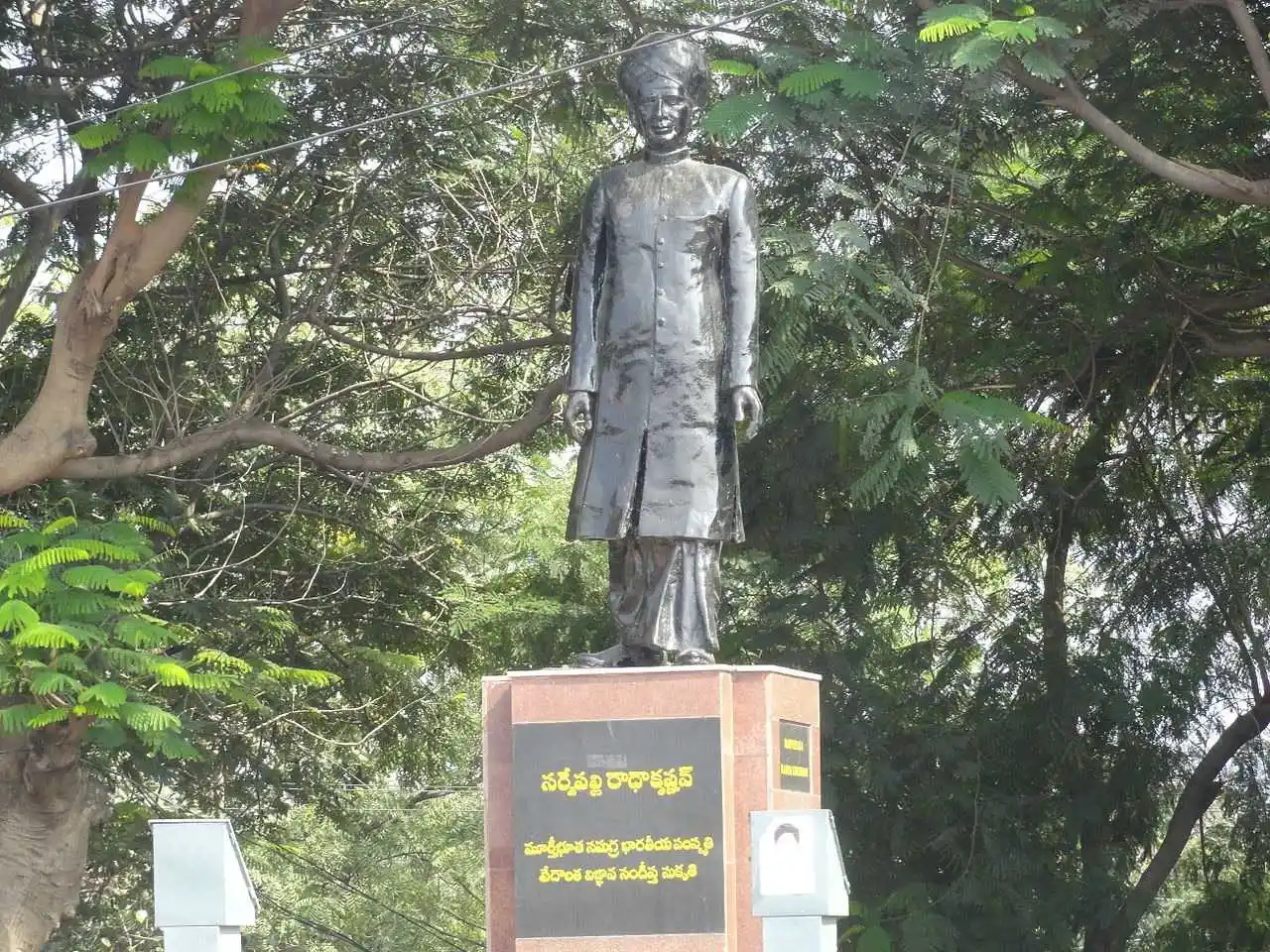 Radhakrishnan was a scholar of religion and philosophy who was very important in the 20th century. His defence of Hindu traditions helped India become a nation-state and helped Vedanta become the most important part of Hinduism. Radhakrishnan's explanations of Hinduism and focus on spiritual experiences made it easier for people in the west to understand, which influenced modern spirituality. People have said that he is a bridge between East and West because he has strong roots in both Indian and Western philosophy.
Radhakrishnan was a scholar of religion and philosophy who was very important in the 20th century. His defence of Hindu traditions helped India become a nation-state and helped Vedanta become the most important part of Hinduism. Radhakrishnan's explanations of Hinduism and focus on spiritual experiences made it easier for people in the west to understand, which influenced modern spirituality. People have said that he is a bridge between East and West because he has strong roots in both Indian and Western philosophy.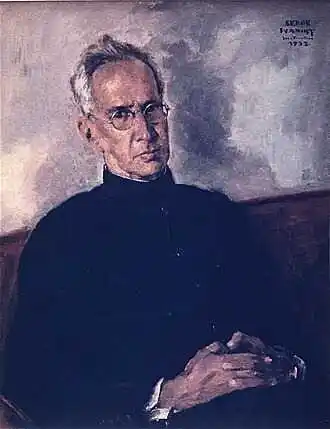 It is not God that is worshipped but the authority that claims to speak in His name. Sin becomes disobedience to authority not violation of integrity.
It is not God that is worshipped but the authority that claims to speak in His name. Sin becomes disobedience to authority not violation of integrity.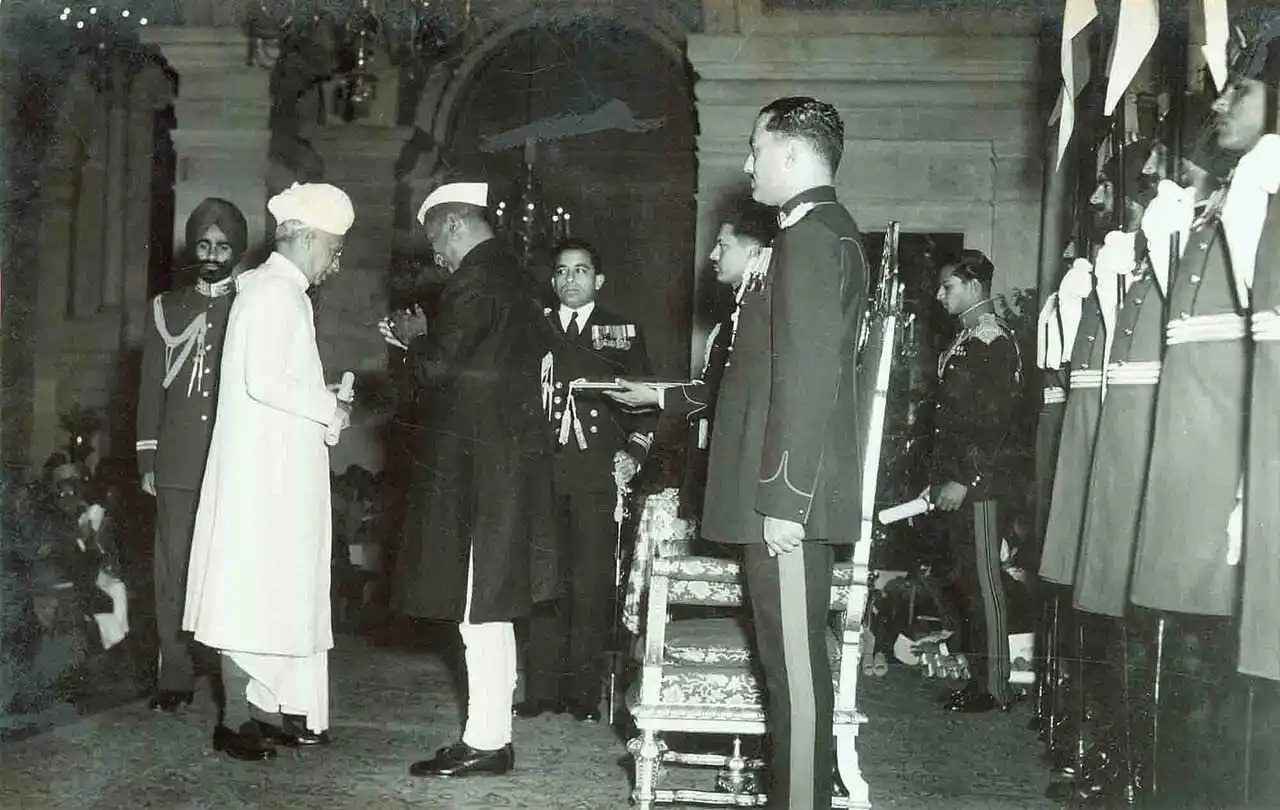




 We now support international payments
We now support international payments
